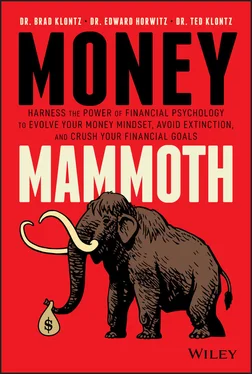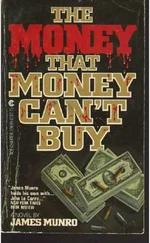Whether you're a saver, spender, or investor, we are fortunate to have so much opportunity sitting in front of us. If you get nothing else from reading this book, know this: Every piece of who you are, whether psychologically, spiritually, emotionally and physically, subtly intertwines with your feelings about money and shapes the way you see the world.
The good news is the tools, concepts and exercises in this book put the power in your hands to better understand your belief system and your habits and how adjustments can be made to live more fully. As an advisor, I wish all my clients came to the table with the knowledge this book provides.
A tip before you dive into the book. Stop defending what you think you know and embrace the unknown. Open yourself to the realization you have much to learn, and often it's sitting within the depths of who we are, the people we associate with and the environment in which we grow.
What I'm talking about here is a lesson we often share with our clients. Let us help you live your life by design, not by default. As you read on, use the principles in this book to be purposeful in your approach. To move forward in a smarter way. Because the future favors the prepared.
Ron Carson
CEO/Founder
Carson Group
Introduction
YOUR MONEY MAMMOTH
Mammoths ruled their domain. Enormous creatures and majestic in their being, they lived at a time long after the dinosaurs were gone. Mammoths roamed the land of Western Europe and Northern America, eating grass, raising their young, and enjoying life. Changes in the mammoths' environment were happening all around them, but they failed to see and adapt to the effects. Over their time, the earth cooled, and as the tundra started to freeze, their food sources began to disappear. The mammoths started to migrate to find more sources for food, but they encountered new challenges. Neanderthal cave dwellers learned to communicate within tribes and learned to work together to hunt. Prehistoric humans evolved from the scavenger to the hunter and quickly ascended the food chain. The mammoths were slow moving, large sources of meat protein, and sadly, easily killed. In the end, early human's social hunting skills, a changing environment, and their species' failure to evolve and adapt was the source of the mammoths' eventual extinction.
OUR EXTINCTION LEVEL EVENT
Throughout history, species adapt and evolve over time to changing conditions or they become extinct. It is a cruel truth of nature and natural selection of survival of the species. However, don't be fooled into thinking these events only occurred millions of years ago. In fact, they are happening every day on our planet; you just may not be aware that they are occurring. While we instinctively look to environmental changes, like climate change, for examples of these events, they are not the only signs. Historically, environmental changes were the source of many early excitation events, but they aren't the only source of excitation level changes.
Some theorize that the extinction level event that will impact humans may come from social versus environmental changes. Is it possible that the social phenomenon of not being able to properly handle our personal finances could lead to enough social unrest to cause a civil war? Can the underlying divide, or political exploitation, between the “wealthy” and “poor” grow to the point that the inequality destroys our social environment, leading to a quantum shift in our lives and society? In fact, it might not be the warming earth, pandemic disease, carbon emission, or a giant meteor that wipes us out. Consider the real possibility that our inability to address financial inequality and the number of people living in poverty as the foundational sources of our ultimate demise.
When it comes to our relationship with money, we are stuck in the Stone Age.
According to the American Psychological Association (APA), money is a significant source of stress for three out of four Americans. 1
Forty-five percent of Americans have no savings whatsoever. 2
The average person age 60 or older who does have savings has about $150,000, certainly not enough to stop working. 3
Almost 40% of American adults wouldn't be able to cover a $400 emergency with cash, savings, or a credit card charge they could quickly pay off. 4
The median American household has only $11,700 in savings. 5
Among elderly Social Security beneficiaries, 48% of married couples and 69% of unmarried persons receive 50% or more of their income from Social Security. In 2019, the average monthly Social Security retirement benefit for a new retiree was about $1,500. 6
The level of credit debt in the United States during the height of the most recent economic expansion (2019) was over $35,000. 7
It's painfully obvious that the average American is in terrible financial shape. Despite the relentless barrage of information and warnings from financial experts that saving for the future is not a luxury but a necessity. In our society, people who don't save are looked down on. We blame them for being irresponsible without realizing that today's bad financial behaviors were our ancestor's essential survival behaviors.
Ask yourself if the environment you were raised in was one of financial independence or one of interdependence. Independence in this case means that every family unit within your tribe was expected to, and generally did, take care of itself. Or was it interdependent, meaning that everyone shared, when necessary, financial resources. If the latter, you may find it very difficult to save while others close to you have significantly less. If your case is the latter, you may feel a great sense of responsibility for people who are in need. You may find that they expect you, if you have more, to share what you have, and if you don't, they may cut you out of their lives.
You are wired to share and not save. That makes it a significant challenge to deal with modern personal finance. But we have another significant challenge: We are also hardwired to spend. Not all that we gathered is given away. We use it; we spend it now; we don't invest in our future. So why do we have that impulse? It's the same reason we have a problem with obesity. We can blame our DNA.
Your ancestors did not live long by engaging in moderation. When there was something to eat, they ate as much of it as they could. They didn't say, Oh, I think I have had enough, I'll quit now, and save some for later. They didn't avoid eating fatty or sugary foods; they thrived on them. There were probably those who thought they should eat in moderation, but in prehistoric days, when people didn't know when or where their next meal would come, they were less likely to survive to pass on their DNA. So, the survivors, our ancestors, were consumers. Consuming as much as they could, even beyond when they were full. They did so because the next meal was not a guarantee and any food that went uneaten would quickly spoil.
This consumer programming helps to partly explain our current obesity crisis in America. We are no better at managing our calorie intake than we are at saving money. In many ways, money is our food. We love to consume it as we find it!
If we get the chance, we will consume more than we need. But now we have the ability to consume more than we even have. We call this buying on credit. Businesses understand this human need and seduce us to consume our money, borrow more, and consume that too. They are just capitalizing on human nature. So modern society has created a situation in which our ancestral programming sets the stage for our becoming obese and broke.
Читать дальше












